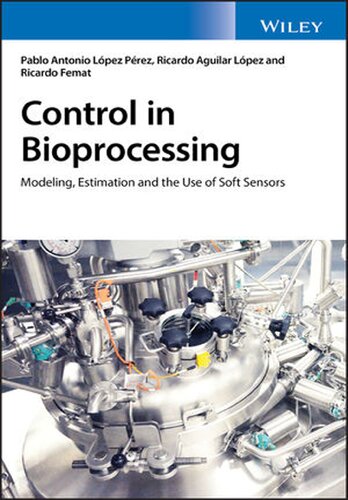

Most ebook files are in PDF format, so you can easily read them using various software such as Foxit Reader or directly on the Google Chrome browser.
Some ebook files are released by publishers in other formats such as .awz, .mobi, .epub, .fb2, etc. You may need to install specific software to read these formats on mobile/PC, such as Calibre.
Please read the tutorial at this link: https://ebookbell.com/faq
We offer FREE conversion to the popular formats you request; however, this may take some time. Therefore, right after payment, please email us, and we will try to provide the service as quickly as possible.
For some exceptional file formats or broken links (if any), please refrain from opening any disputes. Instead, email us first, and we will try to assist within a maximum of 6 hours.
EbookBell Team

4.4
32 reviewsCloses the gap between bioscience and mathematics-based process engineering
This book presents the most commonly employed approaches in the control of bioprocesses. It discusses the role that control theory plays in understanding the mechanisms of cellular and metabolic processes, and presents key results in various fields such as dynamic modeling, dynamic properties of bioprocess models, software sensors designed for the online estimation of parameters and state variables, and control and supervision of bioprocesses
Control in Bioengineering and Bioprocessing: Modeling, Estimation and the Use of Sensors is divided into three sections. Part I, Mathematical preliminaries and overview of the control and monitoring of bioprocess, provides a general overview of the control and monitoring of bioprocesses, and introduces the mathematical framework necessary for the analysis and characterization of bioprocess dynamics. Part II, Observability and control concepts, presents the observability concepts which form the basis of design online estimation algorithms (software sensor) for bioprocesses, and reviews controllability of these concepts, including automatic feedback control systems. Part III, Software sensors and observer-based control schemes for bioprocesses, features six application cases including dynamic behavior of 3-dimensional continuous bioreactors; observability analysis applied to 2D and 3D bioreactors with inhibitory and non-inhibitory models; and regulation of a continuously stirred bioreactor via modeling error compensation.
Control in Bioengineering and Bioprocessing is intended as a foundational text for graduate level students in bioengineering, as well as a reference text for researchers, engineers, and other practitioners interested in the field of estimation and control of bioprocesses.